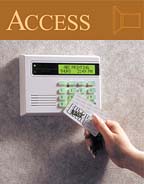

SEC: It seems that first responders are a group of people who need effective technology. What’s happening there?
MAWER: There is great need for equipment at airport, border and port environments as we face chemical and biological as well as explosives threats. We are responsible for trace detection systems in the United States Postal Service. There are handheld testing devices for hazmat teams and first responders. The aim is speedy, intelligent, accurate detection.
SEC: Many organizations are concerned about what could come through their mailrooms. What’s going on there?
MAWER: We are taking the same technologies [used in military and government applications] and leveraging them for mail screening. The challenge here is complete. Is it a hoax or a real threat? What organizations do not want to happen is for a person to find out at their desk. Materials need to be screened effectively before it gets to the desk. Various security operations may choose to screen on-site while others set-up a screening operation off-site.
The initial target is people and organizations with a concern about their mail. It’s also driven by the perception of the threat. Mail screening provides a level of comfort for numerous workers from executives to the mailroom staff itself.
Freedom is nothing without protection. The globalization of our society is totally dependent on secure travel and the free flow of goods, safeguarded against terrorism and criminality. At the same time, our armed forces and public service workers need to be protected against the growing threat of chemical and biological agents; our police forces are combating a rising tide of illicit narcotics; and our emergency services – the first responders – are confronted with unknown threats every time they attend an emergency.
SEC: What’s happening on the Transportation Security Administration (TSA) front?
MAWER: Last month, Smiths Detection received add-on orders from TSA for our explosives trace detection system. The equipment will be used to screen for explosives at checkpoints and for checked baggage inspection. Trace detection technology provides essential support for security professionals in deterring terrorism and maintaining passenger safety. Such systems can detect trace amounts of more than 40 explosives or narcotic substances in less than ten seconds.
There also is a pilot program at Washington, D.C.’s Union Station to screen checked passenger baggage for explosives. As part of that pilot, the TSA will use a high speed explosive detection tomography system, an automated multi-view tomography system designed to screen checked baggage for explosives. The test is the first ever to screen checked baggage boarded on trains.
Such an approach can screen up to 1,800 checked bags an hour automatically and reliably. It allows for multidimensional image evaluation to detect blasting agents, including industrial and military plastic explosives.